
3
ANDALUSIA
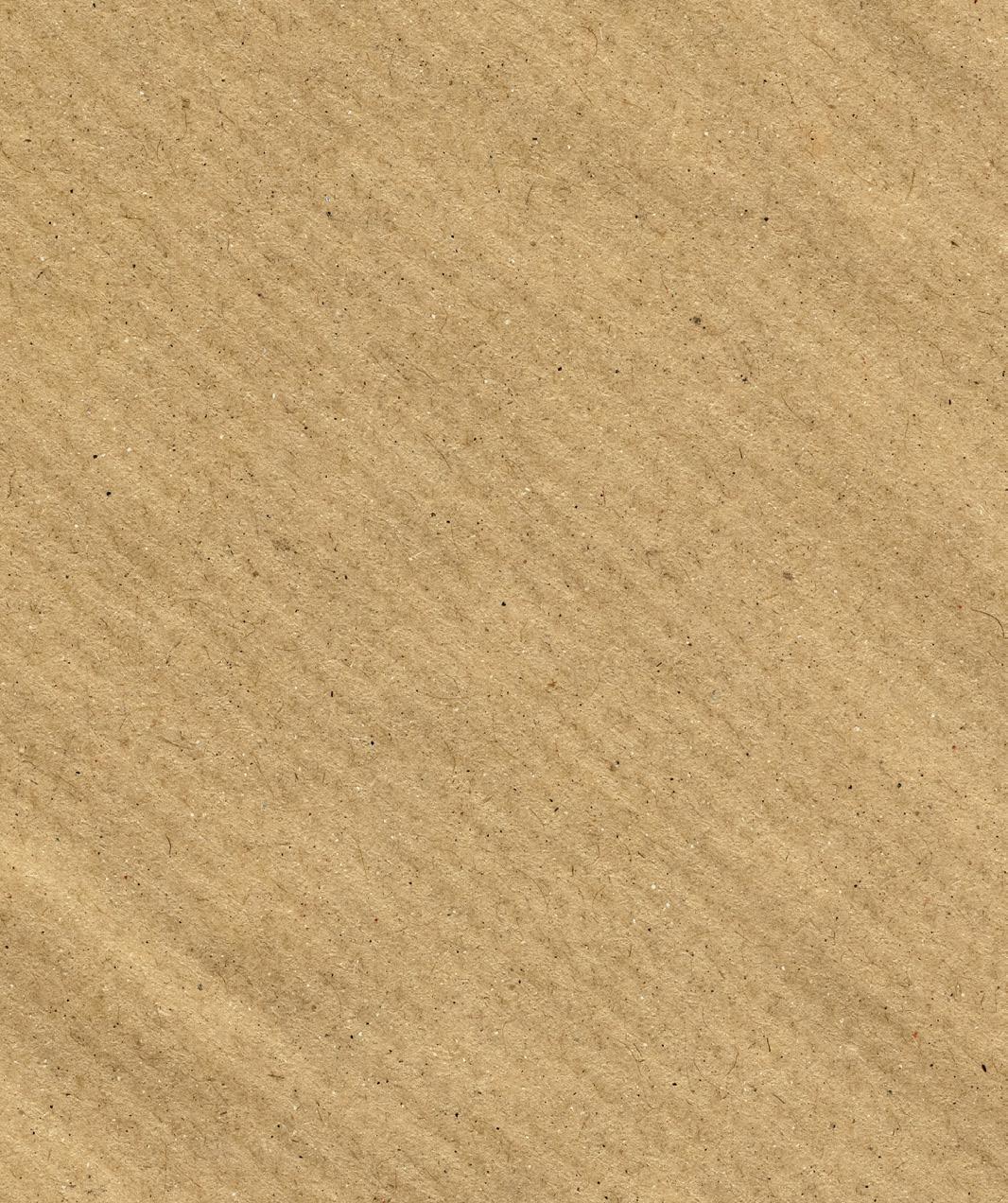


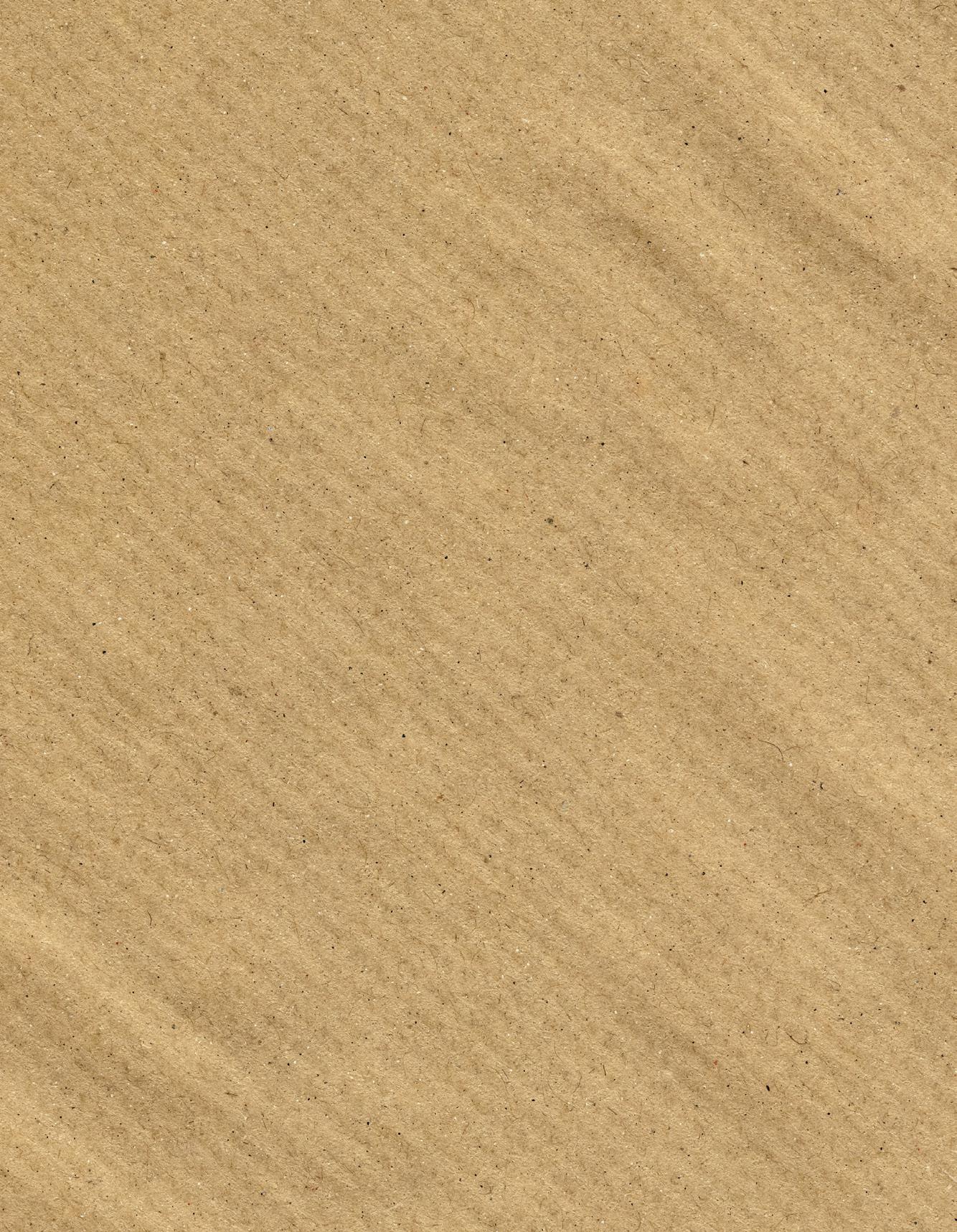
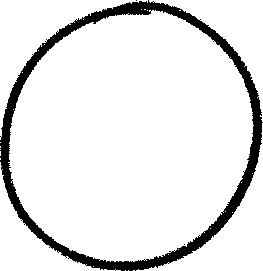
DUAL FOCUS
muestra

1. Human beings and the nutrition function
Take action • Focus on English • 1 Levels of organisation• 2 Human cells • 3 The digestive system and digestion • 4. The respiratory system and respiration • 5 The circulatory system and blood circulation • The excretory system and excretion • Final Challenge
2. The interaction function
3. The reproduction function
4. Health and illness
5. Healthy habits
6. Dynamic Earth
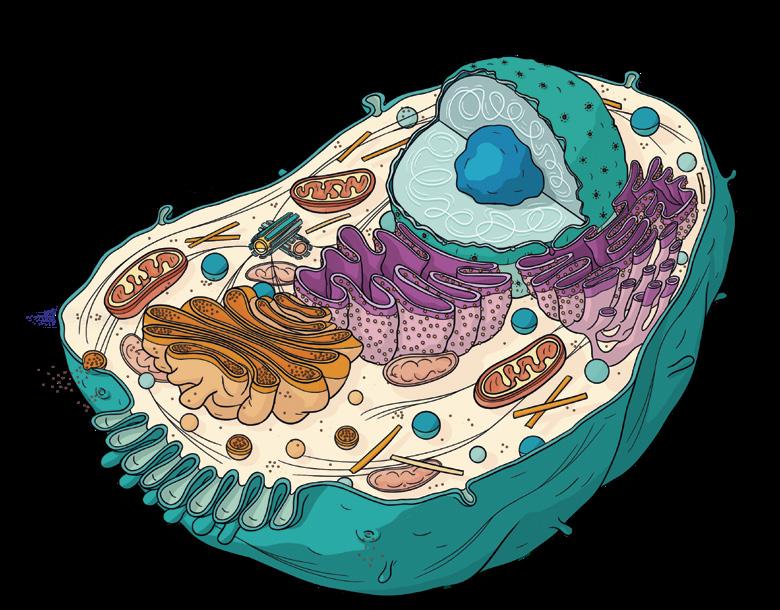
INDEX
1 HUMAN BEINGS AND THE NUTRITION FUNCTION
Take action!
Can you identify all the organs that are involved in the nutrition function?

Levels of organisation
SCAN THE CODE TO FIND OUT ABOUT THE CHALLENGE

HUMAN BEINGS
Human cells
Eukaryotic animal cells
Perform the vital functions
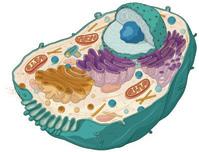
Interaction
Digestive system and digestion
Transforms food into nutrients
Liver
Stomach
Small intestine
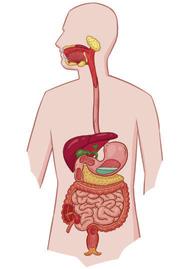
Pancreas
Reproduction
are made up of

Atoms


Molecules

Organs


Tissues Systems
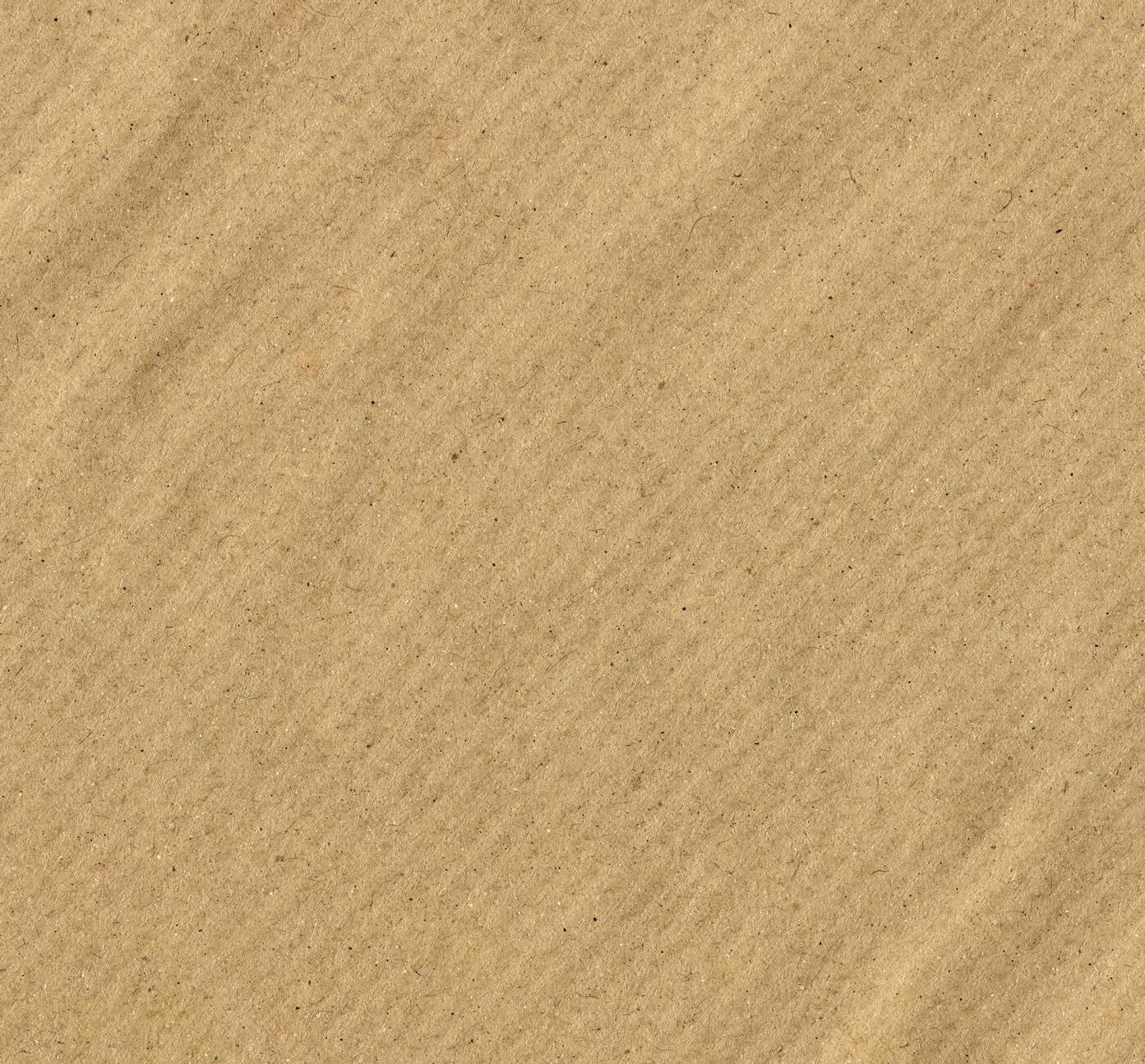
Nutrition
Respiratory system and respiration
Takes in O2 and expels CO
Trachea
Large intestine
Circulatory system and circulation
Transports nutrients, oxygen and waste substances around the body.
Lungs
Diaphragm
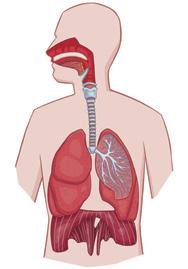
Vein


Capillary

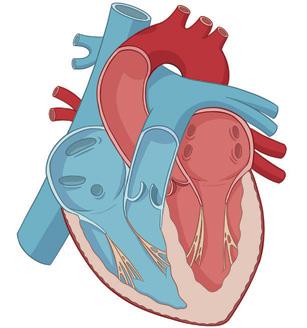
Excretory system and excretion
Eliminates waste products
Kidneys
Ureters
Urinary bladder
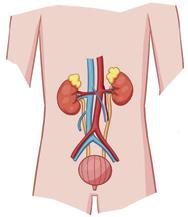
Listening and speaking
Listen to the recording of the outline. Repeat the words to practise your pronunciation.
Reading and Writing
In your notebook, create your own outline. Use the information in the flipped worksheets at the end of this book to include more details.
7
FOCUS ON E N GLISH
Levels of organisation 1

Levels of organisation
Levels of organisation order living matter from the least complex to the most complex.
The levels of organisation are:
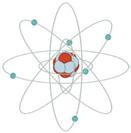
Atoms: the smallest particles that we can divide matter into.
Molecules: groups of atoms held together by chemical bonds.
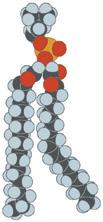
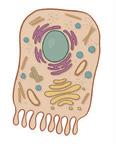
Tissue: groups of similar cells that perform the same function.
Cell: the smallest unit of living beings that can perform the three vital functions.
1 Read the information on this page and complete these sentences in your notebook.
a) ... are groups of atoms held together by chemical bonds.
b) An ... is a group of tissues that performs a specific function.
c) A ... is a group of similar cells.
2 In your notebook, write the level of organisation for each of the pictures on the right.
3 Read the text ‘Human tissues’ on anayaeducacion.es Write the main types of human tissues in your notebook.

How do we organise the different components of human beings?
How many levels are there and what are they called? How do the different levels interact?

System: a set of organs that performs a body function.
Organ: a group of tissues that performs a specific function.
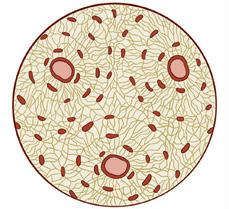
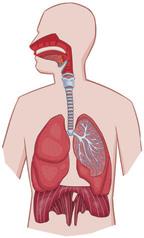
Vocabulary
Levels of organisation, atom, molecule, cell, organ, system, chemical bond, vital function, living matter.
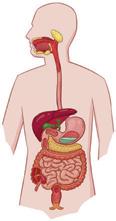
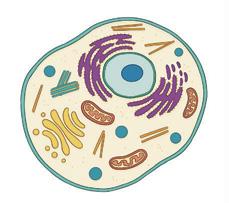
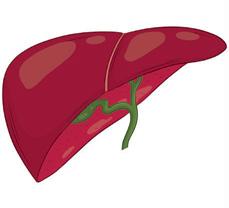
8
A C B D
Human cells 2

Human cells are eukaryotic animal cells. They all have a cell membrane, cytoplasm and a nucleus. However, they have different shapes and functions.
Cell structure
Cell membrane: a thin layer that encloses the cell. It protects the cell and regulates the exchange of substances with the environment. It consists of a layer of lipids with proteins embedded in it.
Cytoplasm: made up of an aqueous liquid called cytosol, which contains substances and cell organelles.
Mitochondria
Centrioles
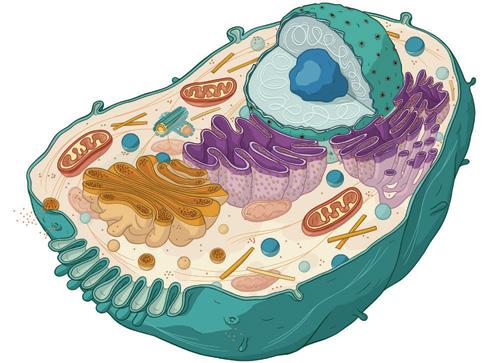
1 Read the information on this page. Are these sentences true or false? Write the answers in your notebook.
a) All human cells have a nucleus, a cell membrane and organelles.
b) Human cells are eukaryotic plant cells.
c) The cytoskeleton is a membranous organelle.
d) The nucleus contains the cell’s DNA.
e) The cell membrane consists of a layer of lipids and cytosol.
f) Mitochondria are membranous organelles.
What are human cells like?
What are they made up of?
What is the function of each part?
Nucleus: a large spherical structure that contains the cell’s genetic material (DNA). It controls cell activity.
Endoplasmic reticulum
Cell organelles: structures contained within the cytoplasm that perform specific functions. They can be membranous (endoplasmic reticulum, Golgi apparatus, mitochondria, etc.) and non-membranous (centrioles, cytoskeleton and ribosomes).
2 Correct the false sentences from activity 1 in your notebook.
3 Draw a diagram of a cell in your notebook. Label its parts.

4 Watch the presentation ‘The parts of a cell’ on anayaeducacion.es. Write the correct organelle for each of these sentences.
a) Its role is to produce energy.
b) It is a network of fibres that gives structure to the cell.
c) It modifies substances produced in the endoplasmic reticulum and transports them to the external environment.
d) These vesicles digest particles taken in by the cell.
Vocabulary
Eukaryotic, function, cell membrane, nucleus, genetic material, DNA, cytoplasm, cytosol, cell organelles, endoplasmic reticulum, Golgi apparatus, mitochondria, centriole, cytoskeleton, ribosome.
9 Unit 1
Ribosomes Cytoskeleton
Golgi apparatus
The digestive system and digestion 3

Nutrition is a set of processes that allows human beings to obtain the matter and energy necessary to build and maintain body structures and to perform different activities.
The digestive system
The digestive system is responsible for transforming food into nutrients that the body can absorb and use. It consists of the digestive tract (which moves the food along) and the digestive glands (which produce substances that transform the food).
Digestion
Digestion is the transformation of food into nutrients. The phases of digestion are mechanical digestion, chemical digestion, intestinal absorption and defecation.
The phases of digestion
1 Mechanical digestion: food is broken down mechanically and moved along the digestive tract.
2 Chemical digestion: chemical reactions transform macromolecules into the smallest molecules possible: the nutrient
1 and 2 mastication, the secretion of saliva and swallowing take place. The saliva starts breaking down some foods.
What is the nutrition function?
Which parts make up the digestive system?
How do we digest food?
3 Intestinal absorption: nutrients pass through the intestinal wall and into the circulatory system. They are then distributed to all of the body’s cells.
4 Defecation: the substances that are not absorbed form faeces. They are expelled from the body.
1 stomach movements and 2 gastric juice continue the digestive process.
2 The liver, pancreas and small intestine produce substances that help transform food into nutrients.
3 Most of the nutrients are absorbed in the small intestine
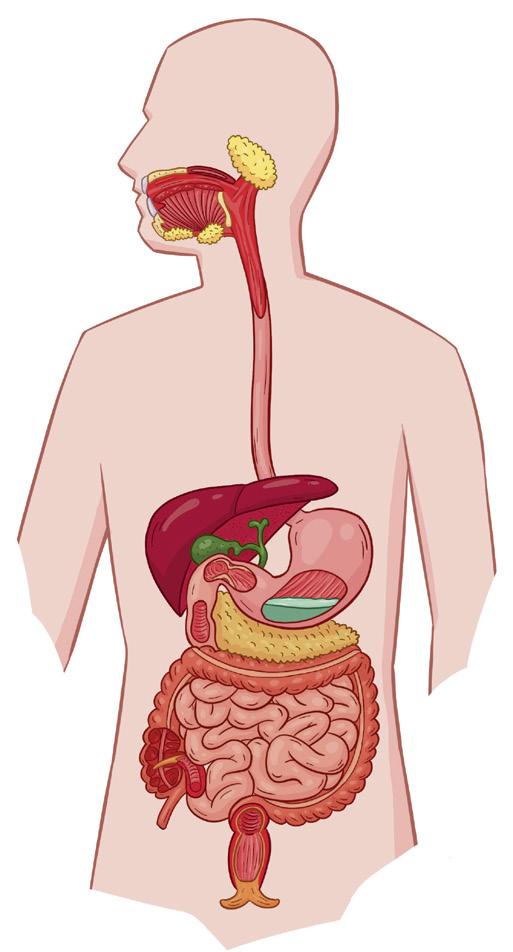
Salivary glands
1 Food travels from the mouth to the stomach through the oesophagus.
Pancreas
3 Water is absorbed and faeces form in the large intestine.
4 Anus
10
Liver
1 Copy and complete the following text in your notebook.
... is a set of processes that allows human beings to obtain the ... and ... necessary to build and maintain body ... and to perform different ... .
2 In your notebook, write whether these sentences describe mechanical digestion, chemical digestion, intestinal absorption or defecation.
a) Chemical reactions transform food into nutrients.
b) Waste is expelled through the anus.
c) Food moves along the digestive tract.
d) Nutrients pass into the blood and are distributed around the body.
3 Correct these sentences in your notebook.
a) Mastication, the secretion of saliva and swallowing take place in the oesophagus.
b) Liver movements and gastric juice continue the digestive process that began in the intestines.
c) Food travels from the mouth to the stomach through the pancreas.
d) Most of the nutrients are absorbed in the stomach.
e) Gastric juice is absorbed and saliva forms in the large intestine.
4 Read the information on the previous page and do some research on the digestive system. Then, copy and complete the table in your notebook.
Stomach
Small intestine
Large intestine
Digestive tract
Pancreas
Salivary glands
Intestinal glands
Liver
Oesophagus
Gastric glands
Digestive glands
5 Look at the pictures of parts of the digestive system. Label them in your notebook.
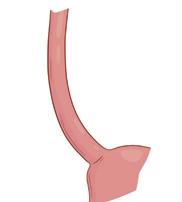
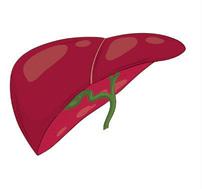
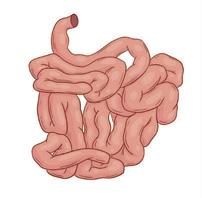
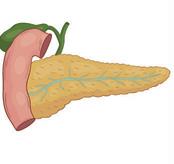
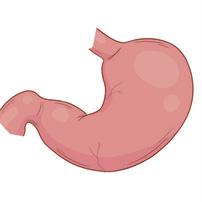
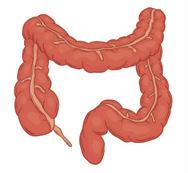
6 Answer these questions about the pictures in activity 5.
a) Which one produces digestive substances?
b) In which one does the process of digestion end?
7 Speaking. Write two false sentences and two true sentences about the digestive system. Then, read them to a classmate and see if they can guess which ones are true and which ones are false. Change roles. Who got the most correct answers?
Vocabulary
Nutrition, digestive system, digestion, matter, energy, digestive tract, digestive gland, mouth, secretion of saliva, swallowing, salivary glands, oesophagus, stomach, large intestine, small intestine, liver, pancreas, anus, mechanical digestion, chemical digestion, intestinal absorption, defecation.
11 Unit 1
A
B C D E F
4

The respiratory system and respiration
The respiratory system
The respiratory system is responsible for taking in the oxygen necessary for cellular respiration and eliminating the carbon dioxide produced during this process.
It consists of:
• The respiratory tract: the tubes that take air to the lungs. They include the nasal passages, the pharynx, the larynx, the trachea, the bronchi and the bronchioles. The bronchi end in the pulmonary alveoli inside the lungs. The walls of the alveoli consist of a single layer of cells surrounded by blood capillaries.
• The lungs are two sponge-like organs. The diaphragm separates them from the abdomen. They are protected by the ribs and a membrane (the pleura) which contains the pleural fluid.
Respiration
Respiration takes places in three phases: inhalation, gas exchange and exhalation.
Nasal passages. The nostrils connect them to the outside of the body.
Pharynx
Trachea
Bronchi
Diaphragm
How does the respiratory system work?
How does air enter the body?
Which gas is essential for the human body?
Which gas is expelled as a waste product?
Inhalation
Contracted intercostal muscles
Contracted diaphragm
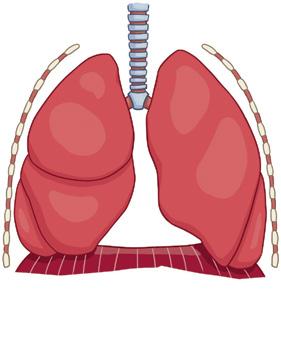
Larynx. Contains the vocal chords.
Bronchioles
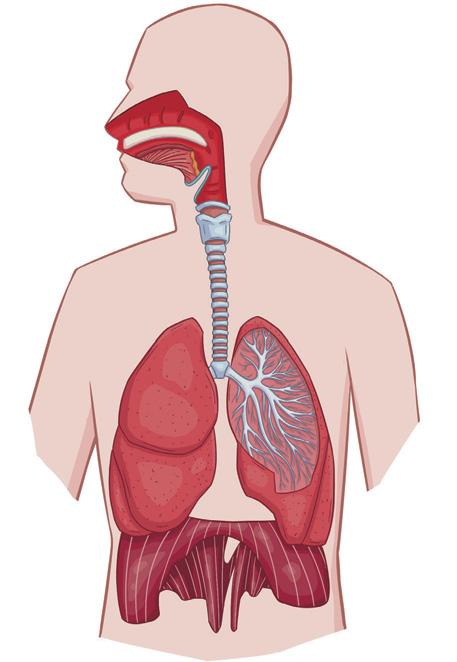

Relaxed diaphragm
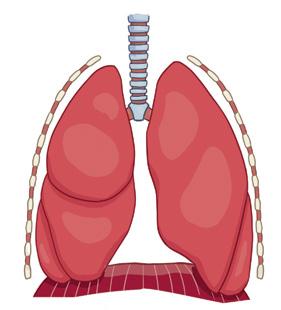
Relaxed intercostal muscles
12
CO2 CO2
Exhalation
Ribs Gas exchange O2 O2
The diaphragm contracts and the muscles expand the rib cage.
Air enters through the nose and travels to the lungs.
Gas exchange takes place by diffusion between the alveoli and the capillaries.
CO2 leaves O2 enters Blood rich in O2 Blood rich in CO2 1 2 3
The diaphragm relaxes and the rib cage gets smaller. The lungs contract and expel the air from the body.
1 Are these sentences about the respiratory system true or false? Write the answers in your notebook.
a) The respiratory system is responsible for taking in carbon dioxide.
b) The lungs are part of the respiratory tract.
c) The respiratory system eliminates the carbon dioxide produced during cellular respiration.
d) The nasal passages are in the lungs.
2 Correct the false sentences from activity 1 in your notebook.
3 Copy and complete the sentences in your notebook.
a) The ... are two sponge-like organs.
b) The ... end in the pulmonary alveoli inside the lungs.
c) The trachea is part of the respiratory ... .
d) The respiratory tract consists of the ... that take ... to the ... .
4 In your notebook, copy and complete the table with the texts below.
Inhalation
Exhalation

5 Listening. Watch the video ‘Respiration’ on anayaeducacion.es. Complete the sentences in your notebook.
a) During exhalation, ... molecules ... the body through a series of narrowing tubes that end in the ... .
b) When we inhale the ... are filled with ... .
c) The blood that reaches the alveoli is low in ... . This gas enters the blood supply.
d) ... ... is present in very high concentration in the red blood cells. It passes into the ..., which contain hardly any carbon dioxide. When we ... the carbon dioxide leaves the body.

6 Reading. Read the text ‘Cellular respiration’ on anayaeducacion.es. Answer the following questions in your notebook.
a) In which part of a cell does cellular respiration take place?
b) Which molecule is essential for cellular respiration?
c) What is the main organic nutrient used in cellular respiration?
d) Copy the diagram in your notebook. Write labels to describe the process of cellular respiration.
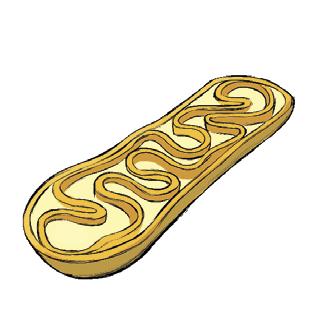
a) Oxygen enters the body.
b) Air enters through the nose.
c) The diaphragm contracts.
d) The rib cage gets smaller.
e) Carbon dioxide is expelled from the body.
f) The rib cage expands.
g) Air leaves through the nose.
h) The diaphragm relaxes.
Vocabulary
Respiratory system, oxygen, carbon dioxide, respiratory tract, nasal passages, pharynx, larynx, trachea, bronchi, bronchioles, pulmonary alveoli, lungs, diaphragm, pleura, inhalation, gas exchange, exhalation.
13 Unit 1
… … …
The circulatory system and blood circulation 5

The circulatory system
The circulatory system distributes nutrients and oxygen to all the body’s cells and removes their waste products. It consists of the heart and the blood vessels.
THE HEART
The heart is a muscular organ inside the rib cage. Its function is to pump blood through the movements of systole and diastole.
Superior vena cava
Pulmonary veins
Right atrium
How does the circulatory system work?
How do substances travel through the body?
What is blood circulation?
THE BLOOD VESSELS
The arteries, veins and capillaries transport blood around the body.
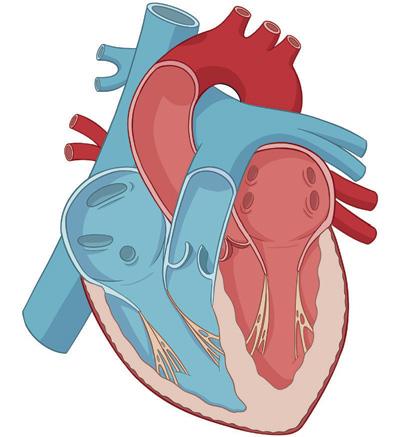
Blood circulation
Aorta
Pulmonary artery
Pulmonary veins
Left atrium
Left ventricle
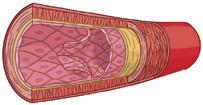
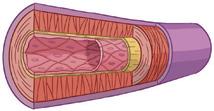
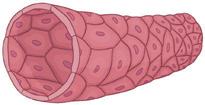
Blood circulation is the path blood follows from the heart, around the body and back to the heart. It is a double system because the blood flows along two circuits: the pulmonary circuit and the systemic circuit.
• Pulmonary circulation: the blood flows between the heart and the lungs. Blood leaves the right ventricle through the pulmonary artery, which branches into two arteries: one for each lung 1 . After gas exchange, oxygenated blood returns to the left atrium through four pulmonary veins 2
• Systemic circulation: takes place between the heart and the body organs. Blood leaves the left ventricle through the aorta 3 ; the aorta branches into smaller arteries that spread around the body 4 . After gas exchange, the blood returns to the heart through the superior and inferior venae cavae and into the right atrium 5
Pulmonary arteries
The arteries take blood from the heart to the body tissues. They are thick and have elastic walls to withstand the force with which blood exits the heart.
The veins take blood back to the heart. They have thinner and less elastic walls than arteries. They also have valves to prevent blood from flowing backwards.
The capillaries are a single layer of cells. They exchange substances between the blood and the cells. They also connect the arteries and the veins.
Lungs
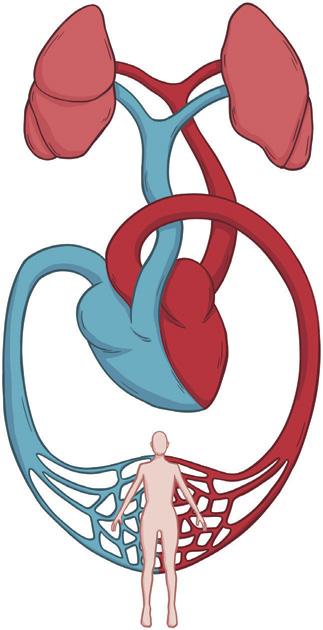
Pulmonary veins
Aorta
Left atrium
Right atrium
Vena cava
Right ventricle
Left ventricle
14
Right ventricle
3 1 2 5 4
1 Read the information on the previous page. Then, copy and complete the sentences in your notebook.
a) The ... system distributes ... and ... to all the body’s cells and removes their waste products.
b) The circulatory system consists of the ... and the ... ... .
c) The blood vessels are the ..., the ... and the ... .
2 In your notebook, write whether these statements describe the heart, the arteries, the veins or the capillaries.
a) It is a muscular organ.
b) They take blood from the organs to the heart.
c) They are formed of a single layer of cells.
d) They take blood from the heart to the organs.
e) It pumps blood around the body.
f) They connect the arteries and the veins.
g) They have elastic walls.
h) They have valves to prevent the blood from flowing backwards.
3 Correct the sentences in your notebook.
a) The vena cava enters the left atrium.
b) The aorta leaves from the right ventricle.
c) The pulmonary veins enter the left ventricle.
d) The pulmonary arteries leave the right atrium.
e) The left atrium is connected to the right ventricle.
f) The left ventricle is connected to the left atrium.
4 Speaking With a classmate, discuss the similarities and differences between veins and arteries. Then, complete the table in your notebook.
Arteries Veins
Differences Similarities Differences
5 In your notebook, copy the sentences about the path blood follows around body in the correct order. Start with the moment blood leaves the heart.
a) The blood leaves the right atrium and enters the right ventricle.
b) After gas exchange, oxygenated blood returns to the left atrium through four pulmonary veins.
c) Blood travels around the body and re-enters the heart through the vena cava, which is connected to the right atrium.
d) Blood leaves the right ventricle through the pulmonary arteries.
e) Blood reaches the lungs. It releases carbon dioxide and takes in oxygen.
f) Blood flows from the left atrium into the left ventricle.
g) Blood leaves the heart and flows to all parts of the body.

6 Reading. Read the text ‘The cardiac cycle’ on anayaeducacion.es. Explain what is happening in the pictures below.
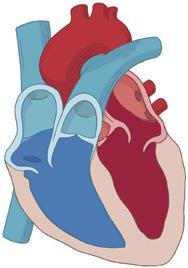
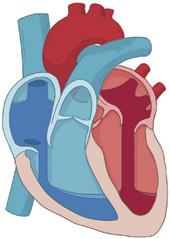
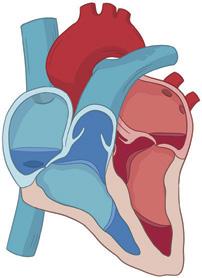
Vocabulary
Circulatory system, circulation, vein, artery, capillary, blood, systole, diastole, atrium, ventricle, blood vessels, aorta, superior vena cava, inferior vena cava, rib cage.
15 Unit 1
1 2 3
6

The excretory system and excretion
The excretory system
The excretory system is responsible for removing the toxic waste products produced during cellular respiration from the blood and expelling them from the body. Urine is the main product of excretion in human beings.
The excretory system consists of the kidneys and the urinary tract: the ureters, the bladder and the urethra.
Urine formation
Urine formation takes place in three phases:
• Filtration: water and small molecules, such as mineral salts, glucose, amino acids and toxic substances are filtered in the glomerulus. The filtrate collects in the Bowman’s capsule. It then enters the renal tubule.
• Reabsorption: most of the components in the glomerular filtrate are reabsorbed and pass back into the blood.
• Secretion: this takes place in the last part of the renal tubule. Some salts pass from the capillaries into the tubule. They form the urine that is released into the collecting duct.
ANATOMY OF THE KIDNEYS
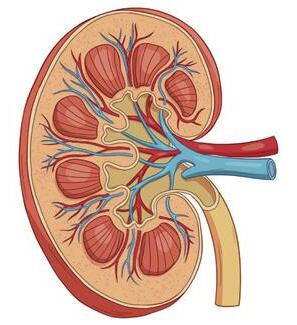
Kidneys
Inferior vena cava
Ureters: transport urine the kidneys to the bladder.
What is the function of the excretory system?
What are its parts?
How is urine produced?

Bladder: stores urine until it is expelled.
URINE FORMATION IN THE NEPHRONS
Aorta
Urethra: tube that allows urine to leave the body.
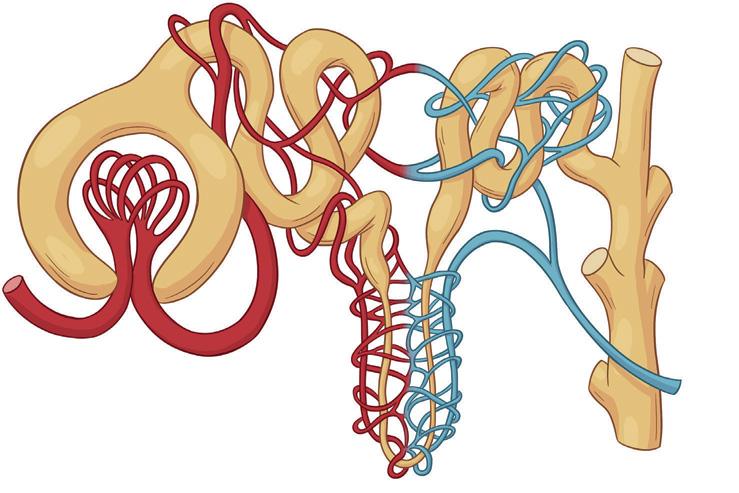
16
Renal cortex
Renal medulla
Renal pelvis
Ureter
Glomerulus
Loop of Henle
Network of capillaries
Towards the ureters
Collecting duct
Bowman’s capsule
Renal artery
Renal vein
1 Writing. Copy these words in your notebook and underline the odd one out. Then, explain your choices.
a) Ureters, bladder, kidneys, urethra.
b) Filtration, secretion, digestion, reabsorption.
c) Renal cortex, renal medulla, urethra, renal pelvis.
d) Collecting duct, glomerulus, loop of Henle, urethra.
2 Are these sentences true or false? Write the answers in your notebook.
a) The excretory system filters nutrients from the blood and expels them from the body.
b) The excretory system consists of the kidneys and the urinary tract.
c) The renal artery leaves the vena cava.
d) Human beings have one kidney and one bladder.
e) The ureters connect the bladder to the kidneys.
f) The bladder stores urine until it is expelled by the ureters.
g) Urine leaves the body through the urethra.
3 Correct the false sentences from activity 2 in your notebook.
4 Complete the sentences about urine formation in your notebook.
a) Some mineral salts pass from the ... into the tubule. They form the ... .
b) The ... collects in the ... capsule. It then enters the renal tubule.
c) ... is when water and small molecules, such as mineral salts, glucose, ... ... and ... substances are filtered in the ... .
d) Most of the components in the ... filtrate are ... and pass back into the ... .
e) ... is released into the collecting duct which leads to the ... .
f) ... takes place in the last part of the renal tubule.
5 Order the sentences from activity 4 to show the phases of urine formation.
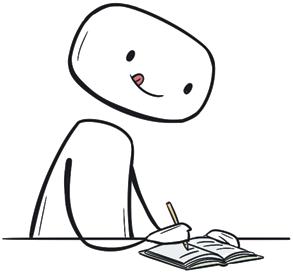
6 Look at the diagram of a nephron. Label parts A-E in your notebook. a
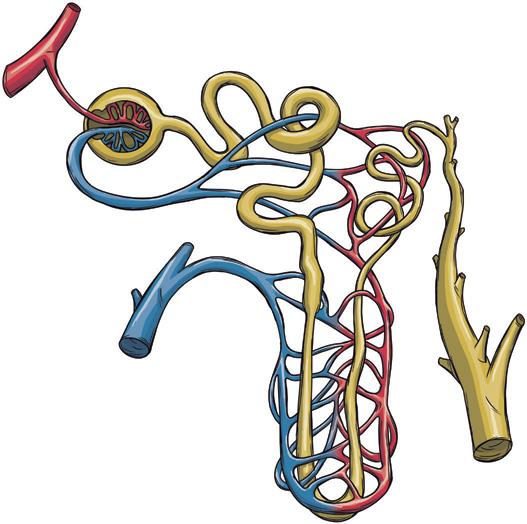
7 Speaking. We consider other body structures, such as the lungs, the sweat glands and the liver, to be excretory organs. With a classmate, read the sentences below. Then, match each one to one of these organs.
a) They are located all over the skin and produce a liquid similar to urine that is formed from the blood filtrate that passes through them.
b) It releases into the intestines some substances resulting from the degradation of erythrocytes and some medicines that are excreted with bile.
c) They expel the carbon dioxide produced during cell respiration.
8 Read part a of activity 7 again. Which waste product does it refer to?
Vocabulary
Excretory system, excretion, kidneys, urinary tract, ureters, urethra, bladder, collecting duct, glomerulus, nephron, loop of Henle, Bowman’s capsule, filter, reabsorb, secrete, urine.
17 Unit 1
b c d e
The final challenge
Take action!
HOST A SCIENTIFIC ROUNDTABLE
Imagine that you are going to a conference where there will be specialists in the nutrition function in human beings. You have been invited to join a roundtable on the subject. In groups, do some research and prepare your contribution.
STEP 1
Decide on the topic for your presentation:
The anatomy
• The characteristics of an organ or a system
• How the organ or system is different from that of other animals.
The functions
• What makes the heart beat?
• Why can we control our breath but we not our heartbeat? What are the implications of this?
• Why are there some nutrients that human beings cannot break down and absorb?
• Why do we excrete so much water if it is essential for life?
Research your topic

STEP 2
• Do some research and write a summary that you can use to introduce your topic at the conference.
• Organise the different topics that will be presented at the roundtable.
• Think of ways to keep your audience interested and entertained during your presentation.
• Include pictures and videos that are relevant to your topic.
• Include a bibliography.
STEP 3
Choose a moderator
Choose a group member to moderate during the conference.
• The moderator will present your topic and invite the other group members to speak in turn.
• All group members must introduce themselves and explain their scientific role.
• After the presentation, the moderator will lead question time. They will take the public’s questions in order and make sure everyone that speaks in turn.
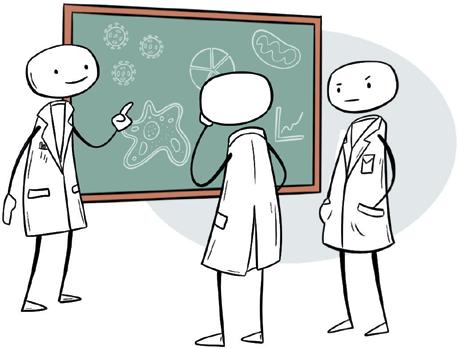
FINAL STEP
Host the roundtable
• Invite the participants to join you and present your research on the chosen topics. During question time, make sure you follow the moderator’s instructions.
18
SCAN THE CODE TO SEE THE GLOSSARY
Contents
Human beings and the nutrition function
The interaction function
The reproduction function
Health and illness 5. Healthy habits 6. Dynamic Earth
AND GEOLOGY
1.
2.
3.
4.
BIOLOGY
SECONDARY EDUCATION 3 DUAL FOCUS
HUMAN BEINGS AND THE NUTRITION FUNCTION 1

Levels of organisation
Atoms Molecules
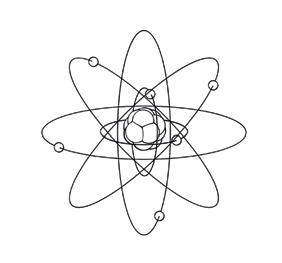
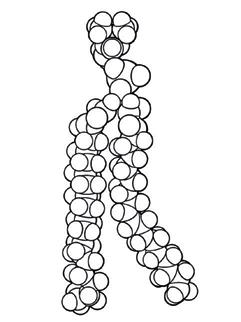
Eukaryotic animal cell.
Mitochondria
Golgi apparatus
Nucleus
Cell Organ Systems
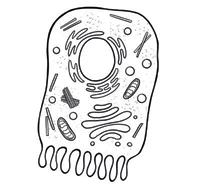
Tissue

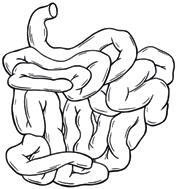
1 Name the levels of organisation from the most simple to the most complex.
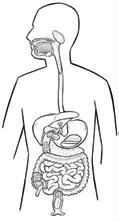
Human cells
It varies in shape, size and function.
In general, they, all have a cell membrane, cytoplasm and a nucleus.
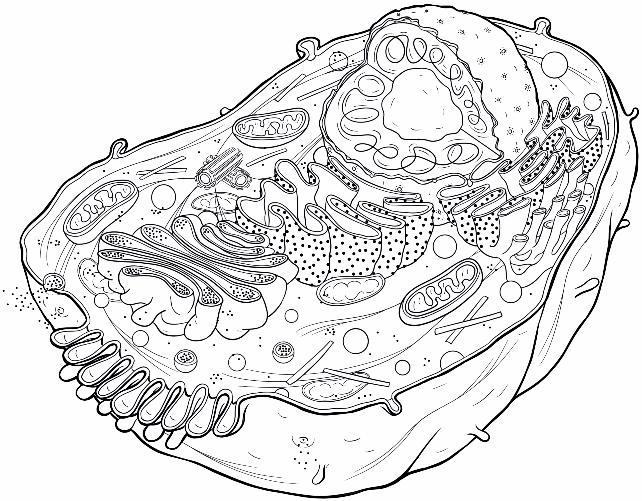
Endoplasmic reticulum
Cell membrane
Cytoplasm
2 What are the shared characteristics of human cells?
8
The nutrition function
Allows us to obtain the matter and energy necessary to perform the vital functions
Is performed by the
Digestive system
Transforms food into nutrients.
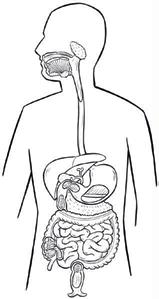
Respiratory system
Takes in oxygen and expels carbon dioxide.

3 Why is the nutrition function important?
Circulatory system
Transports substances around the body.
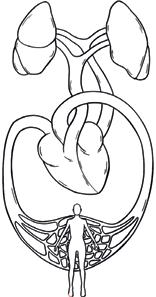
Excretory system
Expels waste products filtered from the blood

The digestive system and digestion
The digestive system
Consists of
Mouth
Oesophagus
Liver
Small intestine
Anus
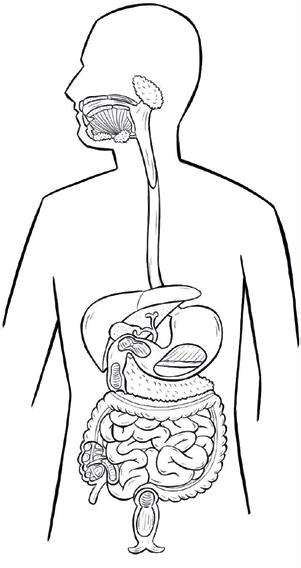
Salivary glands
Stomach
Pancreas
Large intestine
Performs digestion
THE PHASES OF DIGESTION
• During mechanical digestion food is broken down into smaller pieces and moved through the digestive tract.
• During chemical digestion macromolecules are transformed into nutrients.
• During intestinal absorption nutrients are absorbed into the circulatory system.
• During defecation waste is expelled from the body.
4 Name the main organs that make up the digestive system.
5 What are the stages of digestion?
9
Nasal cavities
Trachea
Lungs
Diaphragm
Consists of
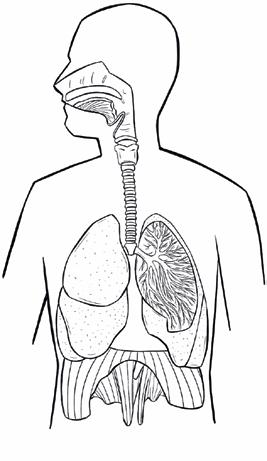
Bronchi
The respiratory system and respiration
The respiratory system
Takes in O2 and expels CO2. There are three phases.
Inhalation
O2
Bronchioles
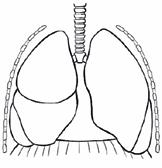
Air enters through the nose and travels to the lungs.
Gas exchange CO2 leaves O2 enters Blood rich in O2 Blood rich in CO2
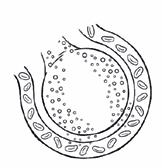
The gases diffuse between the alveoli and the capillaries.
Exhalation
CO2
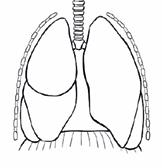
The lungs contract and expel the air.
6 Explain how human beings take in oxygen and expel carbon dioxide.
The circulatory system
Consists of
The heart
Pumps blood around the body Left atrium
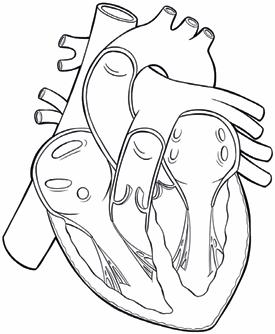
7 List the parts of the circulatory system.
Arteries
The blood vessels

They transport blood from the heart to the tissues.
Capillaries
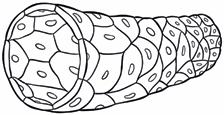
Veins

They transport blood from the tissues to the heart.
They exchange substances between the blood vessels and the cells.
10
1
Right atrium Left ventricle Right ventricle Vena
cava
Aorta
Circulation
The path blood follows from the heart, around the body and back to the heart
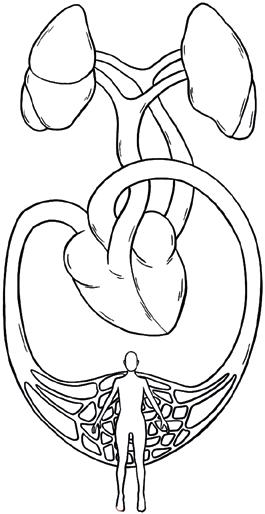
There are two circuits
Pulmonary Deoxygenated blood leaves the heart and travels to the lungs. After the process of gas exchange the oxygenated blood returns to the heart.
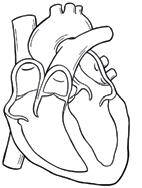
Systemic
Blood leaves the left ventricle through the aorta and travels to the tissues. It returns to the right atrium through the venae cavae.
Blood moves around the body thanks to
The cardiac cycle
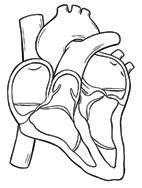
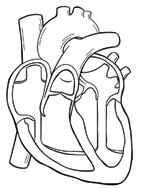
Right atrium Ventricular systole General diastole
8 Describe the process of blood circulation.
The excretory system and excretion
The excretory system
Consists of
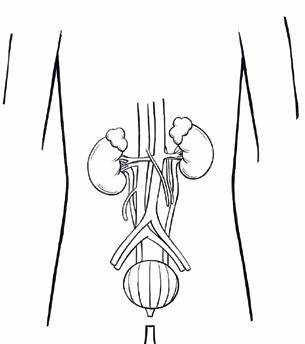
Kidneys
Ureters
Bladder
Urethra
9 List the phases of urine formation.
1
The three phases of urine formation Glomerulus Loop of Henle
Network of capillaries
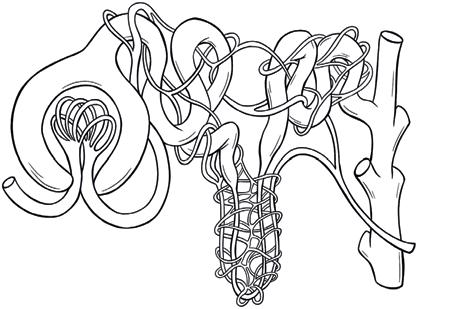
Filtration: water and small molecules are filtered.
2
Reabsorption: water, glucose, amino acids and mineral salts pass back into the blood.
Secretion: urine forms. 3
11
1 2
ventricle
Right
Right atrium Vena cava Aorta
Pulmonary arteries
of the body
veins
ventricle
atrium 1 2
Lungs Rest
Pulmonary
VeLeft
Left
Towards the ureters
capsule
Collecting duct Bowman’s
2 1 3
© This edition: GRUPO ANAYA, S.A., 2024 - Valentín Beato, 21 - 28037 Madrid - Printed in Spain.
All rights reserved. No part of this publication may be reproduced, stored in a retrieval system, or transmitted, in any form or by any means, electronic, mechanical, photocopying, recording, or otherwise, without the prior permission of the publishers.


























































































